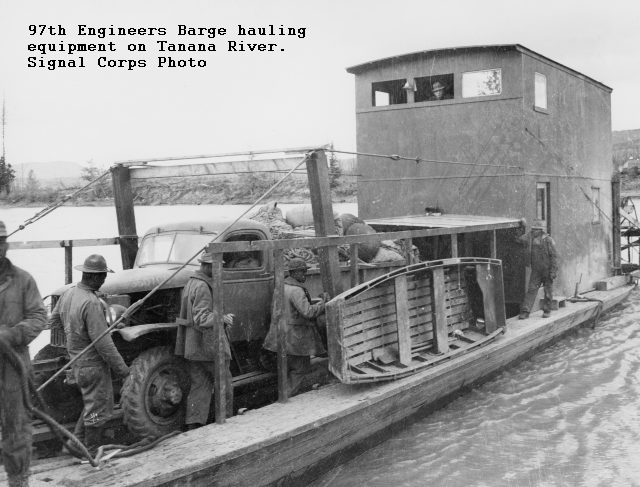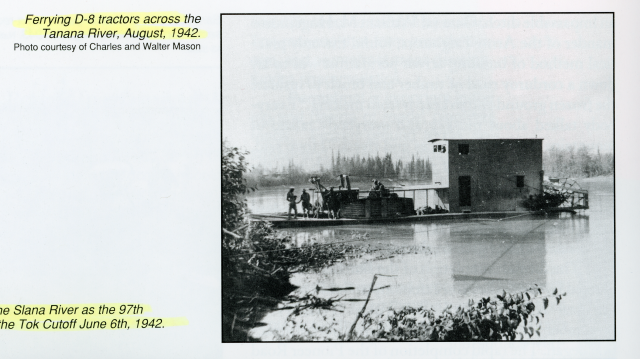
Crossing the Tanana remained vivid in Lt. Walter Mason’s memory of his time on the Alaska Highway in 1942. Mason’s regiment had built road through the Alaskan wilderness since spring. But they hadn’t been building the Alaska Highway, they had been building a road to get themselves to the Alaska Highway. Once across the Tanana, they would turn south and build the real Highway along the river to the Canadian border.
On August 15 they used a crude transit and a D8 Bulldozer to lay out the last eight miles across the Tanana flats to the river. They camped at what would become Tok, Alaska.
Lt. Mason first crossed the river in an “outboard powered engineer assault boat”, thoroughly impressed by the turgid flow of the wide river, carrying a heavy burden of glacial silt.
Lt Mason crossed the river, but his regiment could only cross with pontoon boats and bridging material and other equipment that, the Army being the Army, had arrived promptly—several hundred miles away in Whitehorse Yukon.

A small sternwheeler presented itself; had come up the river with trade goods for the First Nations camps at Tanacross. And Captain McMeekin made a deal. The sternwheeler ferried the equipment across and the regiment headed south along the Tanana toward the Canadian border; averaged three to five miles of road a day. Motor officer, Mason, and his men had trouble keeping up.
The 97th got to the Canadian border ahead of the 18th coming north, so they just kept going. Linked up with the 18th about 12 miles south of Beaver Creek, Yukon.
Winter had already set in and the regiment turned to the problem of housing itself. Regimental supply shipped in roll roofing, nails and hinges. Everything else had to come from the woods. “One big problem was that the outer surface of the trees was already frozen to a depth of two to four inches, making it necessary to slab (saw) off this frozen portion when cutting boards…”
